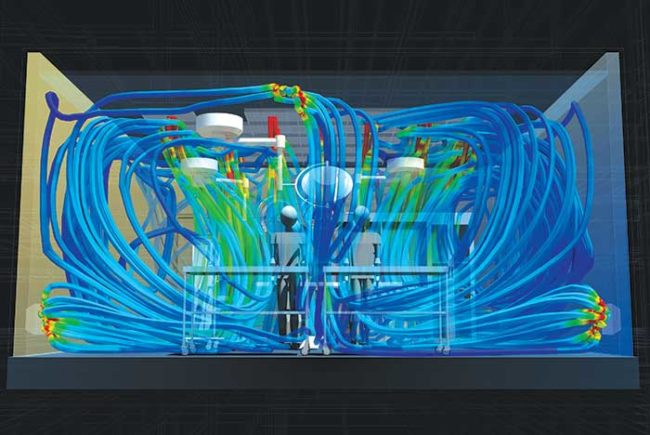Researchers study how door openings impact operating room air quality
Researchers at Johns Hopkins University School of Medicine in Baltimore found that operating room (OR) traffic is an important factor in air quality. Over the course of one week, researchers recorded air particle counts in five-minute intervals and observed movement of health care workers in and out of the OR.
At least one OR door was open during 47 percent of the readings and 13.4 door openings occurred per hour during procedures. The researchers collected 660 air measurements and recorded an average of 9,238 particles at baseline and 14,292 particles during surgery. Overall, air particle counts increased 13 percent when a door was opened.
The researchers noted that most door openings were related to verbal communication and equipment movement, and recommended improving efficiency of communication and equipment to help reduce OR traffic. The study is published in the May issue of the American Journal of Infection Control.
CDC updates pre-pandemic planning guidance
The Centers for Disease Control and Prevention (CDC) issued updated guidance on using non-pharmaceutical interventions to control disease and exposure during a flu pandemic. The guidance incorporates the latest scientific evidence and lessons learned from the 2009 H1N1 flu pandemic, new and updated pandemic assessment and planning tools, and links to pre-pandemic planning guides for different community settings.
Non-pharmaceutical interventions include personal protective measures for everyday use, such as voluntary home isolation of ill persons, respiratory etiquette and hand hygiene; personal protective measures reserved for flu pandemics, such as quarantine of exposed household members and use of face masks in community settings when ill; community measures like school closures aimed at increasing social distancing; and environmental measures like routine cleaning of frequently touched surfaces.
Joint Commission deletes more standards, finishes third phase of EP Review
The Joint Commission recently completed the third phase of its Element of Performance (EP) review project. The project’s goal is to eliminate EP duplicative standards or standards that have become routine operation and no longer require specific reinforcement.
Phase III touched on seven Joint Commission programs, but the deletions vary from program to program. For instance, in some cases, an EP that was deleted for the hospital program had to be retained for another program because it is a specific Centers for Medicare & Medicaid Services (CMS) requirement and CMS requirements differ for each program.
The deletions apply to a number of chapters from each program, including Environment of Care, and Infection Prevention and Control.
Study: One-fourth of nursing home residents are colonized with drug-resistant bacteria
Researchers at Columbia University School of Nursing in New York City say a significant presence of multidrug-resistant, gram-negative bacteria (MDR-GNB) found in nursing homes is cause for concern.
A systematic literature review and meta-analysis found that the prevalence of MDR-GNB colonization among sampled nursing home residents ranged from 11.2 percent to 59.1 percent, with a pooled average of 27 percent.
“This study underscores the importance of having strong infection prevention programs in all nursing homes and long-term care facilities,” says APIC President Linda Greene, R.N., MPS, CIC, FAPIC. “Understanding the dynamics and cause of MDR-GNB transmission is crucial to identifying effective infection control strategies specific to these settings.”
The study was published in the American Journal of Infection Control.





